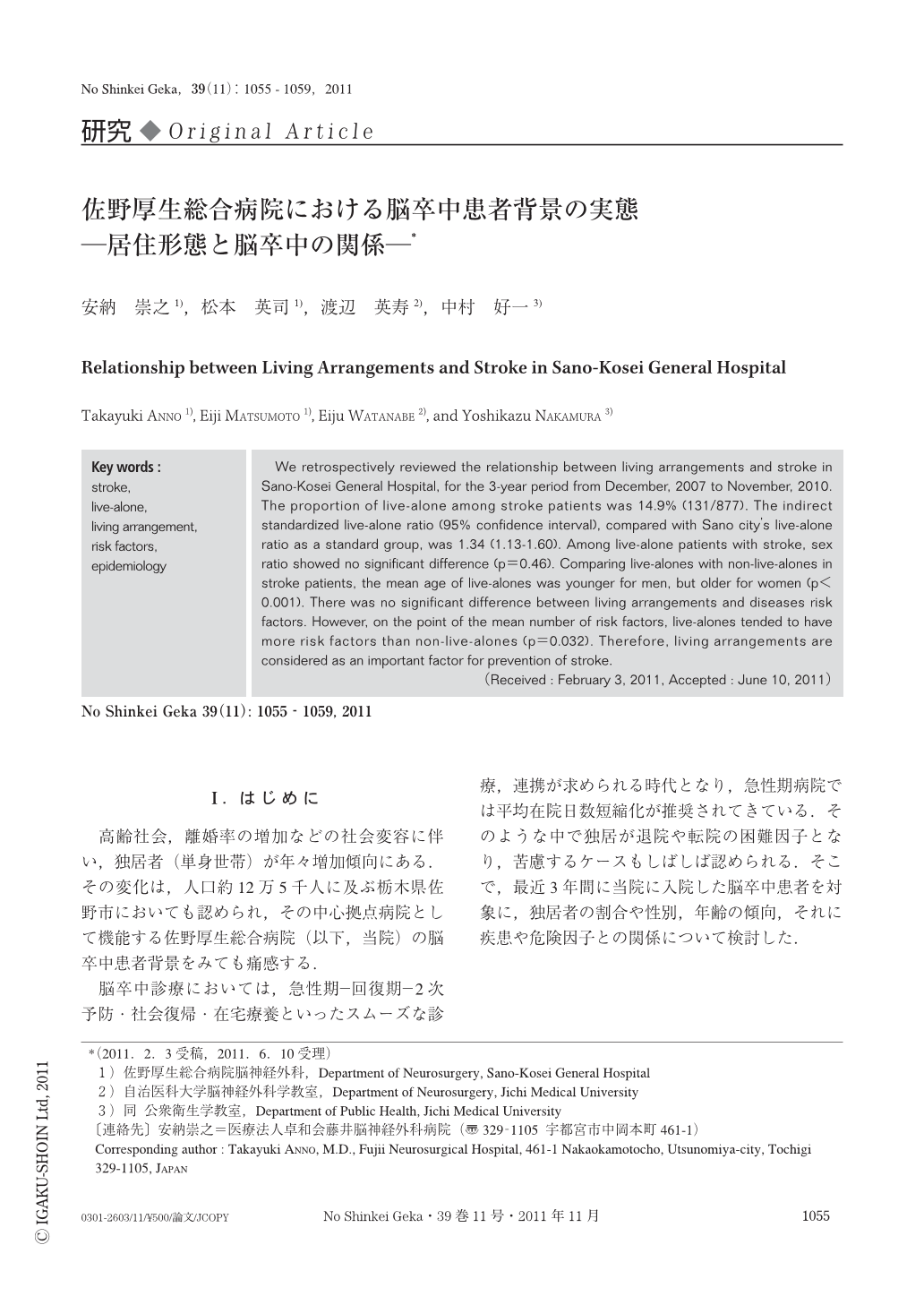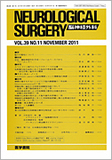Japanese
English
- 有料閲覧
- Abstract 文献概要
- 1ページ目 Look Inside
- 参考文献 Reference
Ⅰ.はじめに
高齢社会,離婚率の増加などの社会変容に伴い,独居者(単身世帯)が年々増加傾向にある.その変化は,人口約12万5千人に及ぶ栃木県佐野市においても認められ,その中心拠点病院として機能する佐野厚生総合病院(以下,当院)の脳卒中患者背景をみても痛感する.
脳卒中診療においては,急性期─回復期─2次予防・社会復帰・在宅療養といったスムーズな診療,連携が求められる時代となり,急性期病院では平均在院日数短縮化が推奨されてきている.そのような中で独居が退院や転院の困難因子となり,苦慮するケースもしばしば認められる.そこで,最近3年間に当院に入院した脳卒中患者を対象に,独居者の割合や性別,年齢の傾向,それに疾患や危険因子との関係について検討した.
We retrospectively reviewed the relationship between living arrangements and stroke in Sano-Kosei General Hospital,for the 3-year period from December,2007 to November,2010. The proportion of live-alone among stroke patients was 14.9% (131/877). The indirect standardized live-alone ratio (95% confidence interval),compared with Sano city's live-alone ratio as a standard group,was 1.34 (1.13-1.60). Among live-alone patients with stroke,sex ratio showed no significant difference (p=0.46). Comparing live-alones with non-live-alones in stroke patients,the mean age of live-alones was younger for men,but older for women (p<0.001). There was no significant difference between living arrangements and diseases risk factors. However,on the point of the mean number of risk factors,live-alones tended to have more risk factors than non-live-alones (p=0.032). Therefore,living arrangements are considered as an important factor for prevention of stroke.

Copyright © 2011, Igaku-Shoin Ltd. All rights reserved.


